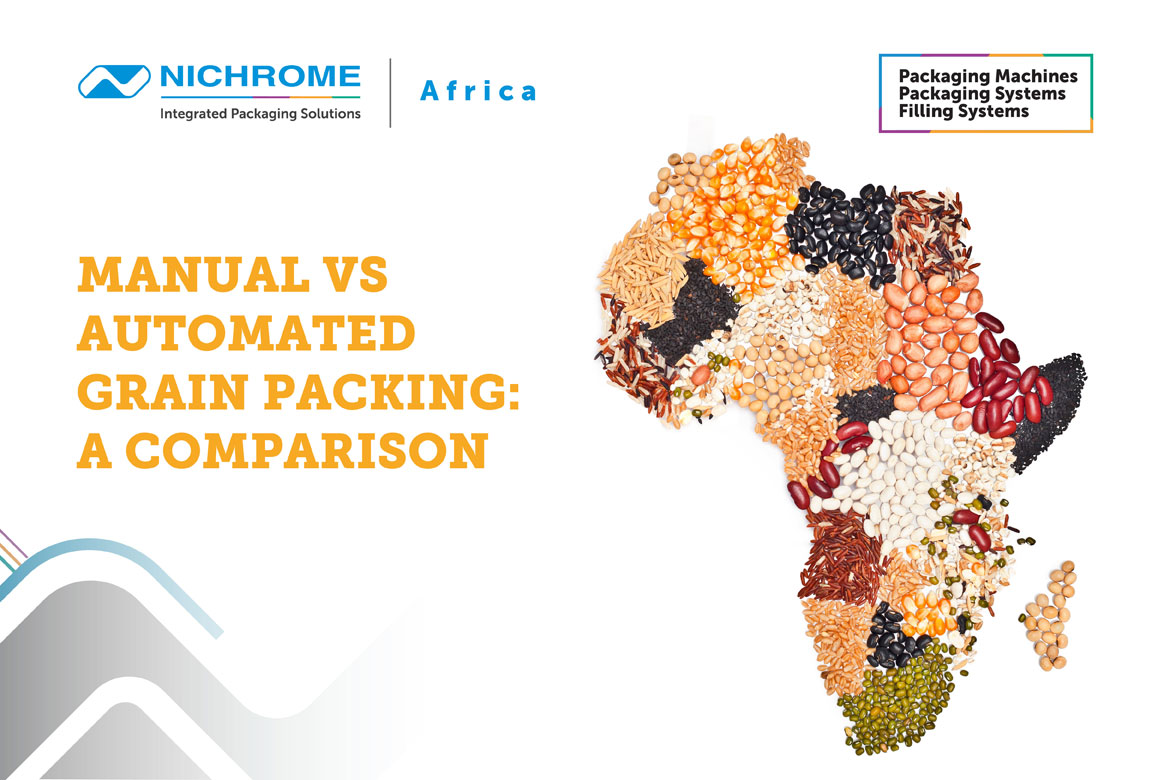
Manual vs Automated Grain Packing: A Comparison
Packaging machinery is used throughout all packaging operations, involving primary packaging to distribution packaging. This includes many packaging processes: fabrication, cleaning, filling, sealing, combining, labelling, overwrapping, and palletizing.
Manual Grain Packaging
Manual grain packaging really lives up to its name in that all the packing is done by hand, by workers, without relying on warehouse management programs or automated equipment like robotics.
While it can still rely on labour-saving devices like gravity flow racks, bulk storage racks, and forklifts, manual grain packing involves workers handling all the product movement, inventory tracking, and packaging by hand, the ‘old fashioned’ way.
Manual Grain Packaging Advantages
Manual grain packaging is best used in industries involving fast-moving consumer goods (FMCG). Businesses such as retail outlets and direct-to-consumer sales benefit from manual grain packing due to the high SKU counts and fast movement of products, both of which can be better managed by a large human workforce and fully refined packaging methods.
Manual grain packaging lends itself to a higher degree of verifiable accuracy due to the involvement of humans and can also save a lot of money on equipment, technology, and upkeep. Hand application is also a great solution for odd or uniquely shaped products.
Manual Grain Packaging Drawbacks
That said, manual grain packaging does always leave slightly more room for human error. It also runs the risk of decreasing productivity in warehouses that focus on longer-term product storage and ones that do not move through SKUs as quickly. Humans also tend to increase the hours of production because of their work timing and inaccurate speed.
Benefits of Manual Packing
- Little or no upfront investment
- Maintains uniqueness of product
- Ideal for small batch products
- Independent of shape of product
- Extremely flexible
Automated Grain Packaging
Automatic grain packing is a method of tracking and packing grains using computerized systems (such as warehouse management software) and specialized equipment to move and pack products quicker.
The software is integrated with the equipment to provide automatic tracking and locating of inventory items, and the items are tracked digitally without involving a human labour force to identify each different SKU. Automated grain packaging is characterized by higher speed and efficiency.
Automated Grain Packaging Advantages
The biggest and most obvious advantage of automatic grain packing is the budget reduction. While many of these systems and installations require a large upfront cost, it can reduce the need for a costly labour force and help streamline and automate operations through the warehouse.
Automated grain packaging is ideal where the quantities are large and there needs to be expediency in dispatching the goods. They are useful where the products need to be shelved for later use because they are indispensable in extending the shelf-life of products by keeping them safe from contaminants.
Automated Grain Packaging Drawbacks
That said, automatic packing tends to not be as helpful for faster product movements as the software and equipment needs to track every change made to the inventory, a task that is typically managed more quickly by individual workers managing the products directly.
It can also hamper rush orders or direct-to-customer shipping, due to the amount of time the software needs to locate and update certain product counts. Needs someone who has the knowledge to use the software which can be a task while hiring manual workers.
Packaging operations can be designed for variable package sizes and forms or for handling only uniform packages, where the machinery or packaging line is adjustable between production runs.
Certainly, slow manual operations allow workers to be flexible to package variation, but some automated grain packaging lines can manage significant random variation and changeovers of moving parts of the machine.
Benefits of Automated Packaging
- Greater speed
- Greater efficiency
- Standardization
- Reduction in labour costs
- Digital tracking of SKUs
- Ideal for large batch products
Manual Grain Packaging Vs Automated Grain Packaging
Automated grain packaging methods yield the highest impact as compared to a manual grain packaging process. There are several machines like cup filling machines, bottle packing machines that provide high impact, speed, and economies of scale.
The choice is based on balance between gains in speed and price. It is especially important to identify which part of your packaging machine process consumes more time before choosing. In addition, the manual packaging process does not provide greater speed and high impact.
The most exclusive pieces of packaging machines may not have a major impact. There are many automated packaging process done by pure pack packaging machine, and pouch filling machines.
If you are trying to run many products, grain packaging sizes and lengths in a single line then a semi-automated grain packing solution is better than an automated packaging solution. It is useful for the filling, product conveying, combined with hand-packing that provides the flexibility for various packages and works at a reasonable price.
Nichrome Grain Packing Systems
Nichrome offers a wide range of automated grain packaging machines, filling systems and packaging solutions for your grain and seed packaging needs.
Food Packaging Machines like those in Nichrome’s Excel Plus series, equipped with innovative technology offer innovative packaging solutions that follow stringent packaging quality standards for a wide range of pulses packaging machine, rice packaging machine, Sugar packaging macine, seed packaging machine, maize packaging machine. If grain packaging is your need. Call us indeed!
